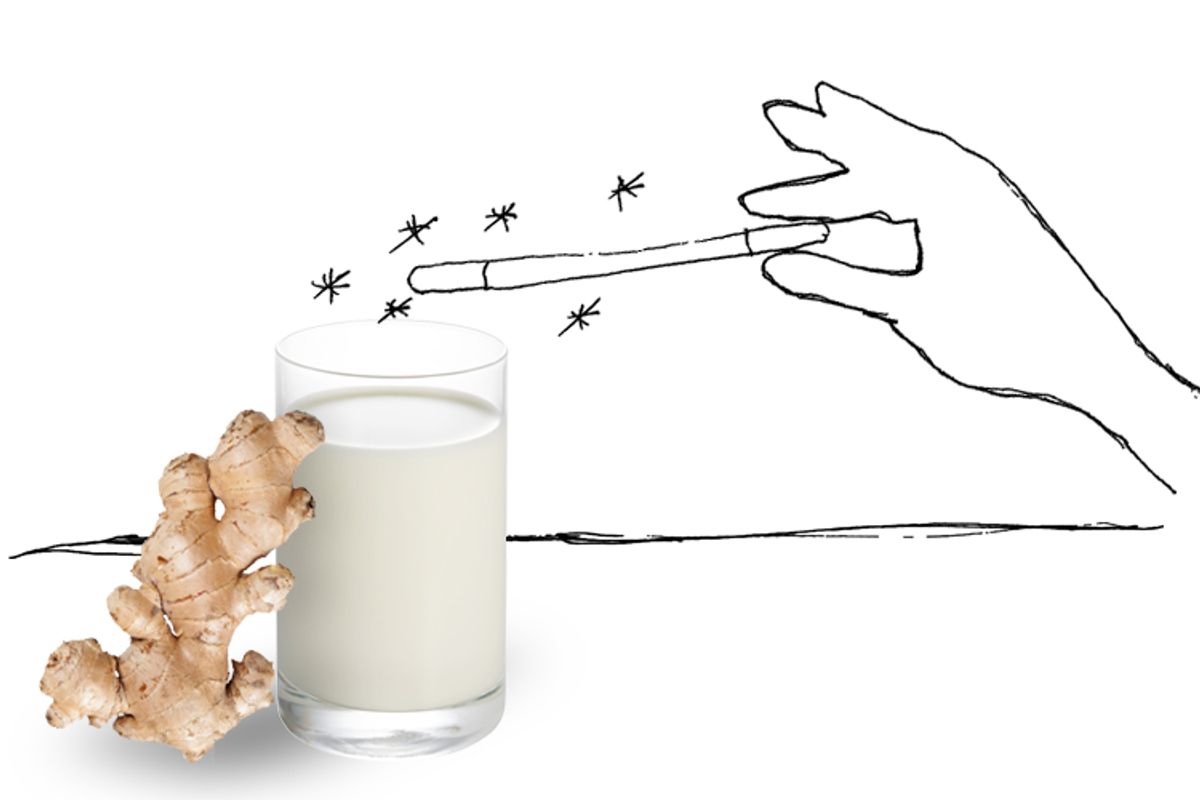Corrected: The alternate recipe instructs you to let the milk cool before adding to the ginger juice
I have this theory about the balance of global culinary power: It exists. It's not perfect -- I mean, sorry, but Turkmenistan is not as tasty a place as Thailand -- but all food superpowers have something keeping them from being the One Perfect Cuisine. The Indians are weak on noodles, Mexicans are weak on bread, the French ... well, who wants to give the French the satisfaction? And no one's ever gotten sick because they ate too many Chinese desserts.
But there is one dessert I saw on a recent trip to Hong Kong that I couldn't get enough of -- ginger milk pudding. Calling it a "pudding," though, isn't entirely accurate, since it's not thickened with eggs or starch or ... anything, really. In fact, the literal translation is "ginger juice steamed milk," and that is actually what it is: a bowl of beautiful white, its texture as much liquid as it is solid, sweet and round and pure with a warming glow of ginger. It's kind of magical, even if the magic lies in a decidedly unwitchy chemistry. An enzyme in the ginger causes the milk to firm up a little when heated, and it does so just enough to turn it smooth and slippery in your spoon, like you may have pulled a custard out of the oven a little early, but man, are you glad you did.
The Chinese aren't known for their love of milk (the absence of cream, cheese and crusty bread are the other things keeping them from One Perfect Cuisine status), and so the little shops that specialize in these puddings all over the Cantonese-speaking parts of the country always seem a little unexpected. Which is fine, since the sensation of slurping hot, spicy, just-set milk is as unexpected as it is lovely.
Ginger milk pudding
Recipe adapted from Ken Hom, "Fragrant Harbor Taste"; note the two methods for making this, if you're steamer-averse
Serves 4
Ingredients
- 2 tablespoons ginger juice (from 2 ounces of fresh ginger, about a 4-inch piece)*
- 3 cups whole milk
- 6 tablespoons sugar
Directions
- Combine all ingredients well. Pour into four bowls. (Rice bowls, usually, small but fairly tall; whatever you use, it's a little better to not have a lot of surface area at the top.)
- Set up a steamer. Use a big, wide pot with snug lid with a rack -- like a cooling rack -- at the bottom that gives you at least 1 inch of clearance underneath for water. Bring the water to a boil and turn it down to a gentle simmer.
- Place bowls on the rack, cover and steam gently until the custard shows a lazy, wobbly jiggle when you gently shake the bowl. It should look just barely set. I'd check on them after 10 minutes of steaming, especially if all the bowls don't fit and you're doing this in batches, and then every couple of minutes thereafter. Overcooking the puddings makes for ugly-looking curdling (there is no polite way to say it) and causes the texture to not be quite as silky, but they'll still be delicious.
- Alternately, there is a version of this dish that doesn't even involve steaming; you simply heat the milk and sugar on the stove, stirring, until it steams and threatens to bubble. Then you cool the milk until it's 150 F, pour it into the ginger juice, already divided into bowls. Wait 3 minutes for it to set. It's much easier, but the texture is much looser.
- Traditionally, serve these hot, but they're lovely cold, too. Let rest to nearly room temperature, then cover with plastic wrap and chill.
* To peel and juice ginger: Ginger skin is delicate and thin, so don't use a peeler. Just use the edge of a spoon to scrape off the skin and save yourself a lot of waste. Then grate the ginger with the finest grater you have (then mince it with a knife for good measure if you want to maximize your juice) and squeeze it either against a very fine-mesh strainer, or with cheesecloth. At Asian groceries you can sometimes find a ginger juicer, which is a porcelain dish with a prickly patch in the center used to grate the ginger, and this makes quick work of it.



Shares